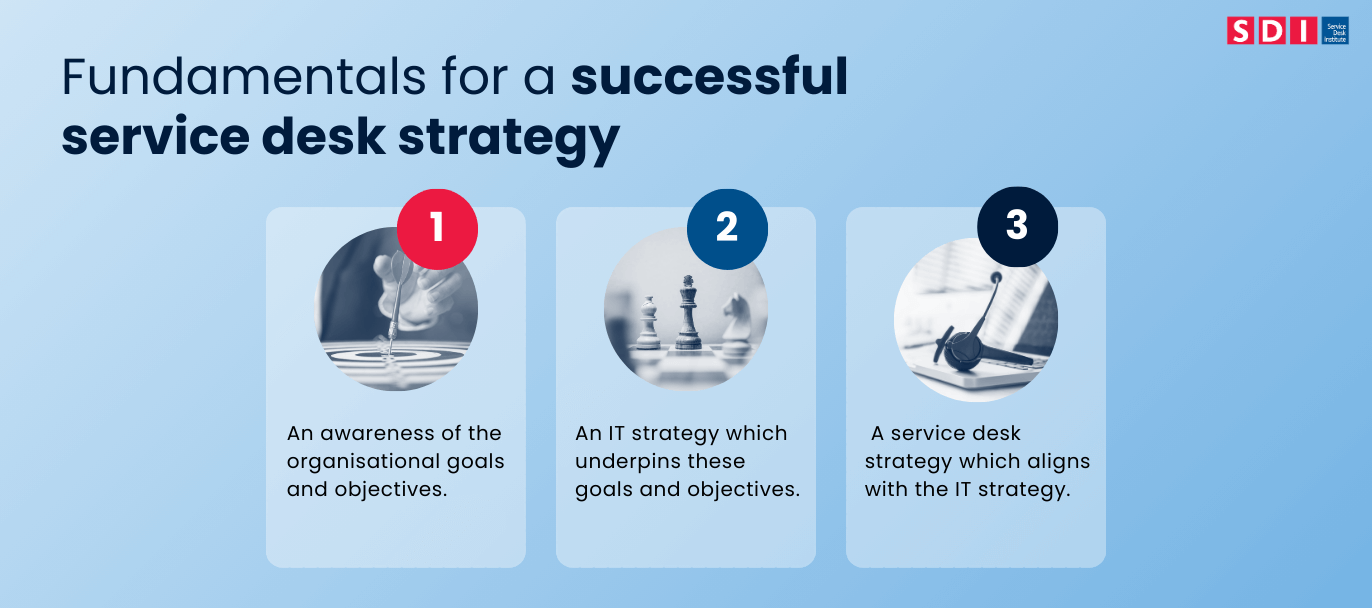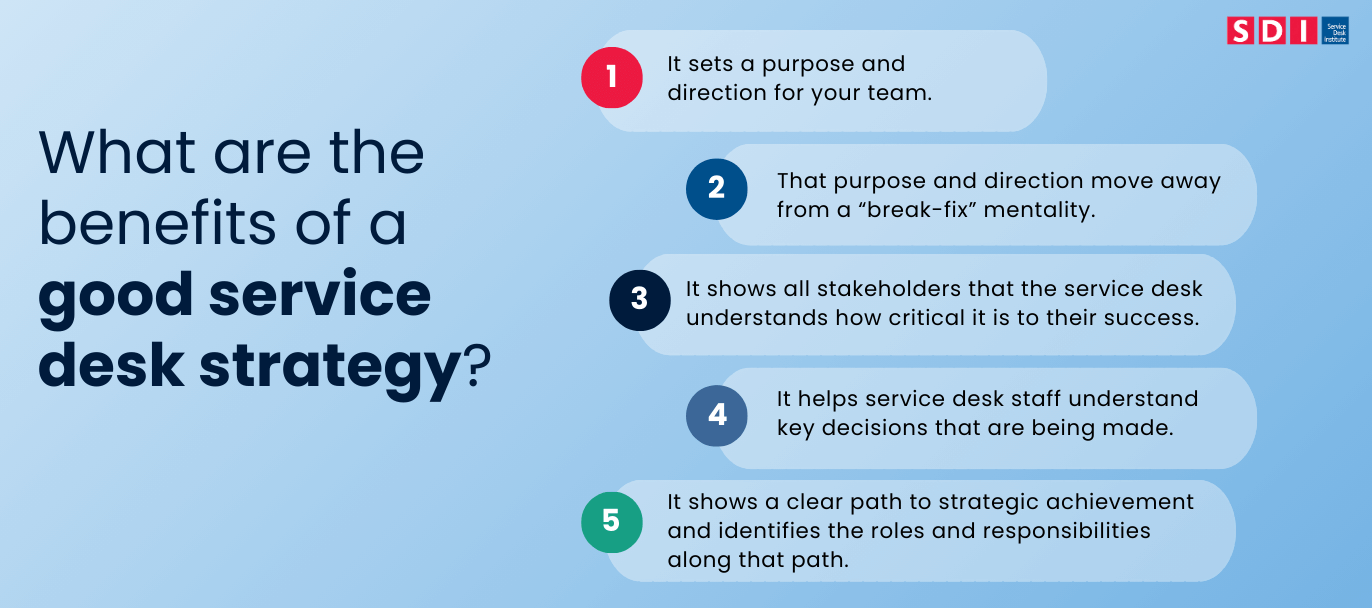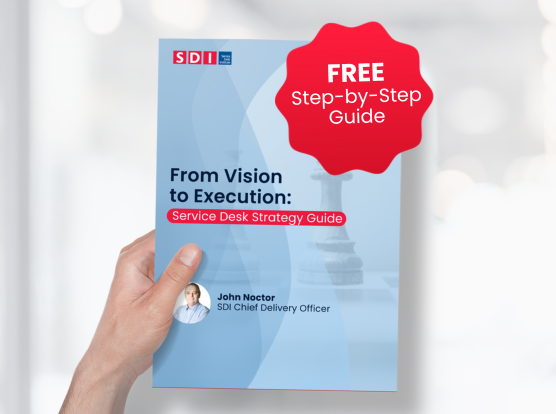By John Noctor, SDI Chief Delivery Officer
As a consultant and auditor, one of the biggest challenges I find service desks face is creating a robust and meaningful strategy. I think the word “strategy” itself creates a mistaken sense of complexity and difficulty — and that really isn’t the case.
All we are looking for is something to show you know your objectives and how you are going to achieve them. We are not looking for a Brexit-level trade agreement document!
Remember, no one ever said a strategy must be a dull 25-page Word document.
Some of the best I have seen are graphically driven, send a clear message and have been presented via PowerPoint, a web page or other engaging medium.

⚡ Let’s start with the fundamentals for a successful service desk strategy. It’s simple really – there are just 3 steps:
1️⃣ An awareness of the organisational goals and objectives.
2️⃣ An IT strategy which underpins these goals and objectives.
3️⃣ A service desk strategy which aligns with the IT strategy.
With this approach you should be able to show how every objective you have for your service desk underpins your organisation’s goals, directly or indirectly, which is the key to success.
Simple, yes?
That’s the key! A good strategy simply shows how a service desk will be successful today, tomorrow and in the future.
What makes a good service desk strategy?

Now let’s look at the benefits of a good service desk strategy:
✅ It sets a purpose and direction for your team.
✅ That purpose and direction move away from a “break-fix” mentality.
✅ It shows all stakeholders that the service desk understands how critical it is to their success, has a plan to achieve its goals and enables the IT strategy.
✅ It helps service desk staff understand key decisions that are being made.
✅ It shows a clear path to strategic achievement and identifies the roles and responsibilities along that path.
So, what should go into a great Service Desk strategy?
Each strategy has to absorb its own characteristics that fit the type of service desk and the provider you are, your culture and even your maturity.
However, for me, I like any service desk strategy to answer the following questions:
◾Who are we, and who do we support?
◾ How are we structured? (Operating model)
◾ What services do we provide?
◾ What processes do we own or interact with?
◾ A strengths, weaknesses, opportunities and threats (SWOT) analysis
◾ What is the service desk’s vision and mission? How are these supported by critical success factors (CSFs), and how are these CSFs validated by related key performance indicators (KPIs)?
◾ What are the values the service desk works to uphold?
◾ What is the high-level (organisational) strategy?
◾ What is the IT service provider strategy, and how does this support the high-level one?
◾ What are the service desk’s strategic objectives, and how are these aligned with those of the IT service provider?
◾ What is the execution plan for each of the service desk’s strategic objectives
◾ How will the service desk strategy be reviewed, tracked and measured?
◾ What is the plan for stakeholder engagement?
◾ What are the risks the service desk is facing that could impact strategic success, and how are these being mitigated?
◾ What assumptions are being made regarding the strategic journey?
◾ What are the service desk’s current challenges and proposed solutions?
What makes a poor strategy?
In my experience, a poor strategy has the following attributes:
✅ It stands in isolation and does not link to or provide business objectives.
✅ It only shows an end state (the objective) and not how to get there.
✅ It is not treated like a “living” document but created and filed.
✅ It’s not communicated to or understood by the service desk team (the people you need to achieve success!)
✅ Key stakeholders are not identified and involved in the creation or iteration of the strategy.
✅ It’s assumed strategic alignment is set, these need to be reviewed regularly with stakeholders to ensure everyone is still moving in the same direction*
✅ It’s not published.
✅ Measurements of success are not defined.
✅ Risks are not identified or understood.
A scenario I often use is that if you set a strategy in 2019 and did not review it in 2020 following the impact of COVID-19, it is unlikely to still be fit for purpose.
So, can we help you?
Yes! We love strategy! It’s probably why one of my favourite roles I had ever had was “Client Strategy Director” for an ITSM tool vendor. We would love to work with you on building out a comprehensive and effective strategy for your service desk!
If you’re curious about what recurring questions I got asked, what are the steps for implementing a good service desk strategy, and the key factors you should evaluate and assess – join our community and download this FREE guide ‘From Vision to Execution: Service Desk Strategy Guide‘.

















